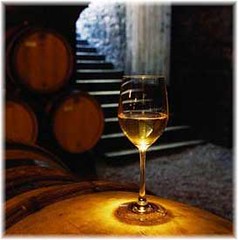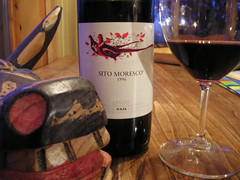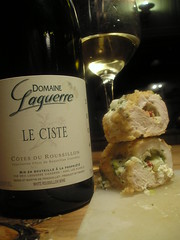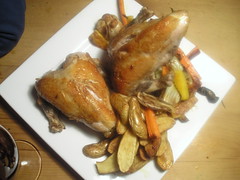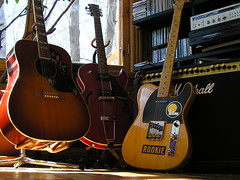 And I would like to Thank Mr. Fender, Mr Gibson… and the guy from GrapeCrafter
And I would like to Thank Mr. Fender, Mr Gibson… and the guy from GrapeCrafterIt’s nice to be missed, and thanks to all of you who have sent emails inquiring as to wether I was A) Dead or B) Finished Blogging. Well, I hope this post proves unequivocally that neither are true.
While I join people like Tom who champion the exponential growth of blogs as a sign of the democratization of wine journalism, the cold, hard reality is that many are simply not worth reading and simply add to the white noise of excessive information. When there is nothing to say, well, there is nothing to say. I hit that wall and have stopped for a bit, giving me an opportunity to stop and think about many of the important issues facing the wine industry, what this blog should be.... and to learn note for note the lead from the Allman Brothers’ Blue Sky. JJ Cale leads are also proving pretty cool.
But I am not just passing my days in a pot induced haze with the Marshall amped to 10. Yes, it is a lot of fun. I have been reading lots and would like to clap my hands, shake my fists and offer a glass of Metras’ Fleurie to the guy from Grape Crafter.
I have written a number of posts on the subject of manipulations, additives and the role of technology in winemaking and Mr. Smith offers up one of the more interesting and lucid perspectives on modern winemaking that I have read in a awhile. While I don’t agree with everything that he says, he is dead on when he says that the real enemy is not the technology itself, but those many winemakers who are simply not good grape growers, not skilled enough in the chais and thus are forced to rely on “draconian measures’ to finish their wines.
The question still remains however, in the hand of the skilled winemaker, are these manipulations really necessary and how much is too much? The Enologix approach still makes me cringe. Part of the problem is the silence, and the somewhat paternalistic attitude that many in the wine industry have about talking about this issue. Many seem to share an image of the consumer as a half step above a complete moron, and that by divulging information about what manipulations and additives were used in making a wine will somehow scare them off. This is a load of crap. The sky is not falling (I check all the time). Most of the people actually interested in knowing about this are people who want to understand them better and see how they drink. Pure and simple. It does not have to be on the label, but this is the information age, put it on a website. If there is an image problem with their usage, let the people who care about it know more. Let us taste the wines with the full knowledge about what went into making them. Hell, I had breakfast with Peter Gogo (head winemaker from Penfolds) and he was more than happy to talk about how his wines were made. Did it make me like Penfolds any less? No.
Knowledge is always better than ignorance.
More to come … soon.
